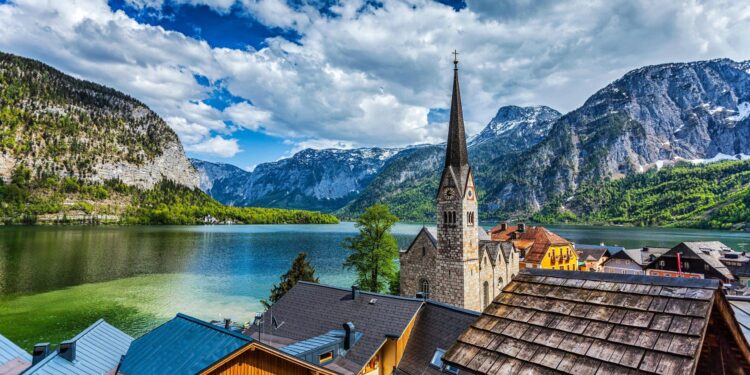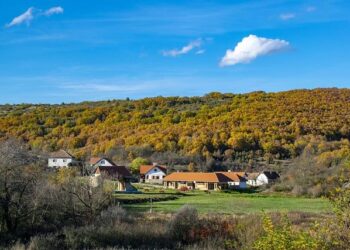Austria has once again taken center stage in the latest reports released by the European Environment Agency (EEA), highlighting the country’s evolving environmental landscape within the broader European context. As climate change and sustainability continue to dominate policy agendas across the continent, Austria’s performance offers key insights into the success and challenges faced by member states in meeting the EU’s ambitious environmental targets. This article delves into the EEA’s recent findings on Austria’s air quality, biodiversity, and renewable energy progress, providing a comprehensive overview of where the Alpine nation stands in Europe’s green transition.
Austria’s Environmental Performance Through the Lens of the European Environment Agency
Austria continues to demonstrate strong environmental stewardship, according to recent assessments by the European Environment Agency. Notably, the country’s commitment to renewable energy and sustainable transportation has positioned it ahead of many of its European counterparts. The EEA highlights Austria’s significant reduction in greenhouse gas emissions, emphasizing policies that promote clean energy sources such as hydropower and solar. This progress is set against a backdrop of challenges, including balancing tourism-driven economic growth with conservation efforts in sensitive alpine regions.
Key environmental trends for Austria, as outlined by the EEA, include:
- Air quality improvements in urban areas due to stricter emissions standards
- Increased investment in biodiversity protection initiatives
- Growth in circular economy practices to reduce waste generation
- Efforts to enhance water resource management amid changing climate conditions
| Environmental Indicator | Austria (2023) | EU Average |
|---|---|---|
| Renewable Energy Share (%) | 33% | 22% |
| Greenhouse Gas Emission Reduction (since 1990) | 28% | 25% |
| Air Quality Index (PM2.5, µg/m³) | 12 | 15 |
| Waste Recycling Rate (%) | 55% | 45% |
Key Challenges Facing Austria’s Ecosystems and Biodiversity
Austria’s natural landscapes, renowned for their rich variety and ecological importance, now face mounting pressures from human activity and climate change. Rapid urbanization and infrastructure expansion have fragmented habitats, disrupting migration corridors and threatening native species. Agricultural intensification further compounds the problem, with pesticide use and monoculture practices leading to soil degradation and loss of pollinators critical for ecosystem health. Additionally, invasive species introduced through trade and travel have begun to outcompete indigenous flora and fauna, altering ecosystem balance. Climate-related shifts, including shorter winters and increased droughts, are exacerbating these stresses, pushing already vulnerable species toward local extinction. Conservation efforts are struggling to keep pace with such rapid environmental transformations, underscoring the urgent need for adaptive management strategies.
A concise overview of the primary challenges reveals a complex interplay of factors threatening biodiversity integrity across Austria:
- Habitat fragmentation due to infrastructure development
- Intensive agriculture diminishing farmland biodiversity
- Climate change altering species’ natural cycles
- Invasive alien species impacting native populations
- Pollution affecting water and soil quality
| Challenge | Impact | Percentage Affected |
|---|---|---|
| Habitat Loss | Reduction in species range | 35% |
| Climate Change | Behavioral shifts in fauna | 27% |
| Invasive Species | Competition with natives | 22% |
Strategic Recommendations for Austria to Meet EEA Climate and Sustainability Targets
To accelerate progress towards the ambitious climate and sustainability targets set by the EEA, Austria must prioritize a multi-dimensional approach. This includes strengthening renewable energy infrastructure, expanding public and green transportation networks, and enhancing energy efficiency in both urban and rural settings. Emphasis on circular economy principles-such as waste reduction, resource reuse, and sustainable manufacturing-will play a critical role in reducing Austria’s overall environmental footprint. Moreover, fostering innovation through increased funding for green technologies and supporting startups can catalyze sustainable growth, aligning economic development with ecological responsibility.
Policy frameworks should also incorporate community engagement and education programs to enhance awareness and drive behavioral change across all sectors. The government could set clearer incentives for businesses and households to adopt low-carbon practices, complemented by stricter regulations on emissions. The following table summarizes key sectors and recommended strategic actions tailored for maximum impact:
| Sector | Recommended Actions |
|---|---|
| Energy | Expand wind and solar capacity; incentivize energy storage solutions |
| Transport | Increase electric vehicle infrastructure; boost public transportation funding |
| Industry | Implement carbon capture; encourage sustainable materials use |
| Agriculture | Promote regenerative farming; optimize water use efficiency |
| Waste Management | Strengthen recycling programs; reduce single-use plastics |
To Conclude
In summary, Austria’s environmental policies and initiatives continue to play a pivotal role within the European Environment Agency’s broader efforts to promote sustainability across the continent. As the country confronts challenges ranging from climate change to biodiversity loss, its commitment to innovation and EU collaboration remains a key component in shaping Europe’s green future. Ongoing monitoring and reporting through the EEA ensure that Austria’s progress is transparent, enabling policymakers and citizens alike to stay informed on the nation’s path toward environmental resilience.
















